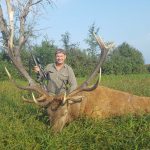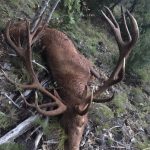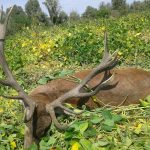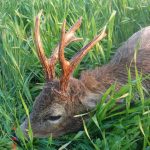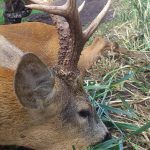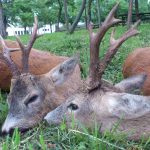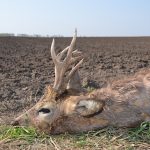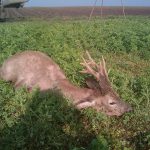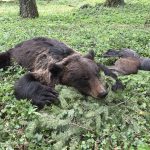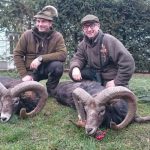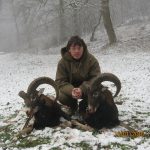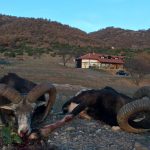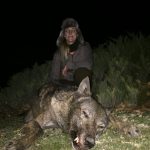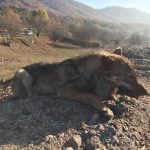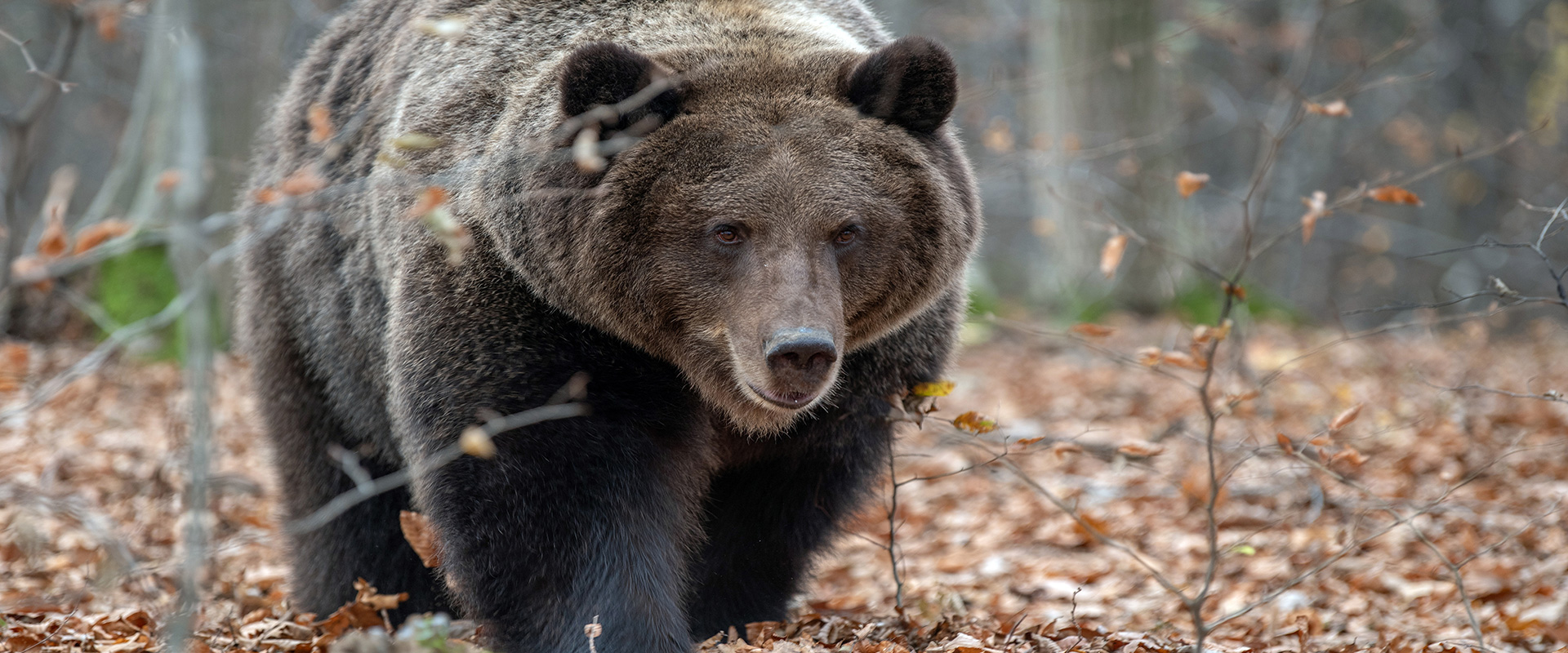
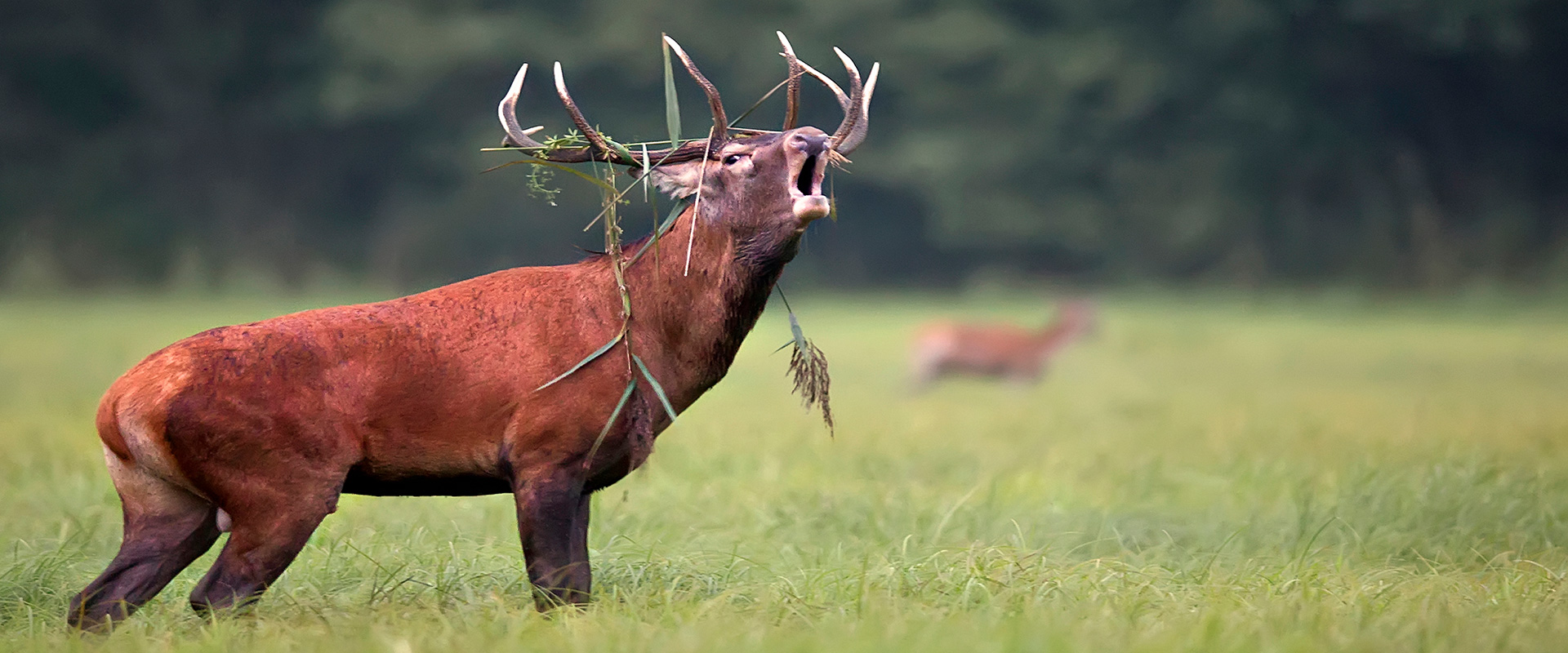
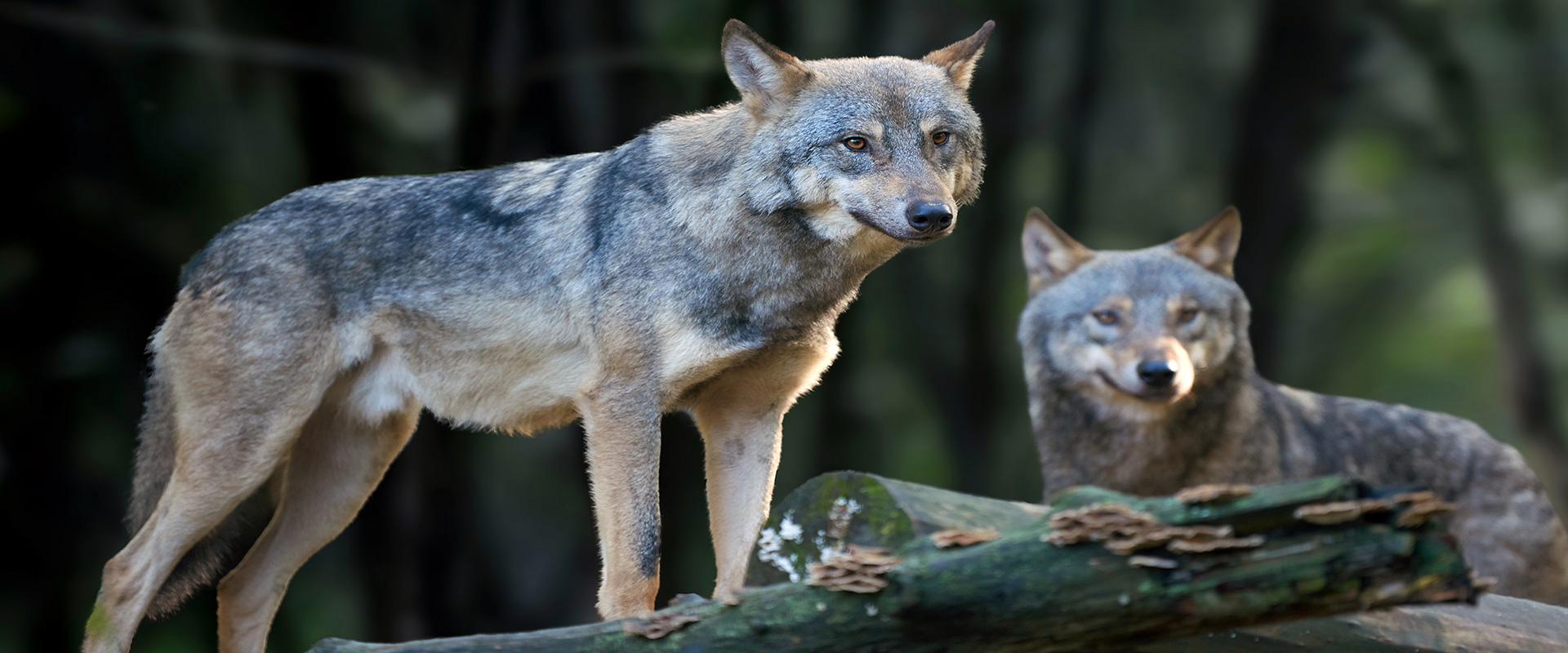
Big game hunting





Brown Bear Hunting
Location: Bosnia and Herzegovina
Hunting Season: October 1 to May 15
Hunting Method: From a blind near a feeding site
The Brown Bear — King of European Forests
The brown bear is the largest and most powerful predator in Europe. Despite its seemingly clumsy appearance, it possesses incredible strength, sharp claws, and remarkable agility. Bears can climb rocks and trees, run quickly, swim, and even walk on their hind legs.
Characteristics of the Brown Bear:
- Diet: Omnivorous, but prefers plant-based food. However, if accustomed to animal food, it can become a true predator.
- Weight: Females weigh around 200 kg on average, while males range from 130 to 400 kg.
- Coat Color: Usually brown, but can also be greyish, bluish, or almost black.
- Claws: The claws on their front paws can reach 5-6 cm in length.
Lifestyle:
Brown bears are solitary and territorial animals. Males only approach females during the mating season.
Habitat:
Once widespread across Eurasia and North America, the brown bear is now nearly extinct in Western Europe. Stable populations remain in Central and Eastern Europe, as well as Scandinavia. Bears prefer beech, oak, and chestnut forests, thickets, and meadows. The minimum territory for one bear is 250 km².
Contact us for an exclusive offer on brown bear hunting!
Wolf Hunting
Location: Serbia, North Macedonia, Bosnia and Herzegovina
Hunting Season: Year-round
Hunting Method: From a blind or driven hunt
The Wolf — A Symbol of the Wild
The wolf is the largest member of the Canis family, embodying strength, endurance, and intelligence. Males weigh around 40 kg on average, while females weigh approximately 36.5 kg. These sleek, muscular predators are capable of covering vast distances and surviving in the harshest conditions.
Characteristics of the Wolf:
- Appearance: Thick, fluffy fur with a short undercoat and long guard hairs, typically grey or ochre in color.
- Teeth: Large and powerful, perfectly adapted for crushing bones.
- Hunting: Wolves hunt in packs, primarily targeting herbivorous mammals whose weight matches the combined weight of the predators in the pack.
Lifestyle:
Wolves are social animals that live in nuclear families consisting of a breeding pair (male and female) and their adult offspring. Young wolves that reach sexual maturity may temporarily leave the pack to establish their own.
Territory and Behavior:
- Territory: The core territory of a pack averages around 35 km². Wolves are highly territorial, and conflicts between packs are one of the leading causes of mortality.
- Activity: Wolves can travel up to 25 km per day and consume around 5 kg of meat.
Habitat:
The wolf is the only member of the Canis genus found in Eurasia and North America. Their habitat includes forests, swamps, shrublands, meadows, pastures, deserts, and rocky mountain peaks.
Contact us for an exclusive offer on wolf hunting!
Chamois Hunting
Location: Serbia, North Macedonia, Bosnia and Herzegovina, Slovakia, Austria
Hunting Season:
- Males: July 1 to January 31
- Females: September 1 to January 31
Hunting Method: Stalking (all day)
The Chamois — A Symbol of Mountain Grace and Strength
The chamois is a graceful member of the Bovidae family, found in the mountainous regions of Europe and Asia. Males weigh between 30-60 kg on average, while females weigh 25-45 kg. Their fur changes color with the seasons: gray-brown in winter and reddish-brown in summer.
Characteristics of the Chamois:
- Horns: Hooked at the tips in both males and females, but males have stronger and longer horns.
- Diet: Grass, shrubs, blackberries, raspberries, dry grass, and salt.
- Lifestyle: Females live in herds with their young, while adult males live solitary lives, joining herds only during the mating season.
Habitat:
Chamois inhabit the mountainous regions of Western, Southern, and Eastern Europe, as well as Asia Minor and the Caucasus.
Contact us for an exclusive offer on chamois hunting!
Roe Deer Hunting
Location: Serbia
Hunting Season: April 15 to September 30
Hunting Method: Stalking or from a blind, in plains or mountains, early morning and late afternoon
The Roe Deer — A Symbol of Grace and Speed
The roe deer is one of the most graceful members of the deer family, weighing between 15 and 35 kg with a slender, agile build. Its coat changes color with the seasons: chestnut-gray in winter and reddish in summer.
Characteristics of the Wild Deer:
- Antlers: Males have antlers, which they use in battles with rivals. The antlers are shed every autumn and regrow.
- Diet: Grass, plants, field crops, acorns, and fruits.
- Lifestyle: Roe deer live in family, extended family, or mixed herds. The leader of the family herd is the female, who cares for the young until the next birth.
Habitat:
Roe deer inhabit a variety of terrains, from agricultural areas to forests. They are widely distributed across Central Europe and Asia.
Contact us for an exclusive offer on roe deer hunting!
HUNTING ORGANIZATION
Our experts know how to prepare you for any hunting scenario. Depending on the type of activity, you may need different levels of preparation, skills, and equipment. We ensure that you are fully ready for your adventure—guaranteeing not only success but also your safety.
Whether you’re an experienced hunter or just taking your first steps into this fascinating world, we provide everything you need: from professional equipment to expert advice. Our goal is to make your hunt comfortable, productive, and unforgettable.
TIME FOR HUNTING
Hunting is permitted in many countries around the world, but each has its own set of rules and regulations. To avoid complications and allow you to focus entirely on your adventure, let us handle all the details. From permits and logistics to preparing for your hunting trip, we take care of everything so you can enjoy a seamless and unforgettable experience.
Contact us today to start planning your perfect hunt and receive a free consultation!
TYPES OF GAME
Mammals: deer, red deer, roe deer, wild goat, mouflon, wild boar, bear, hare, wolf, jackal, fox.
Birds: wild goose, wild duck, grey partridge, rock partridge, quail, pheasant, woodcock, wild pigeon, common dove, African collared dove, capercaillie, black grouse.

